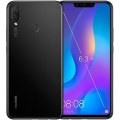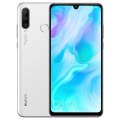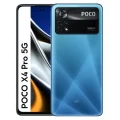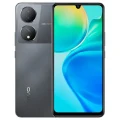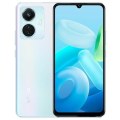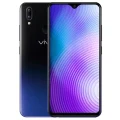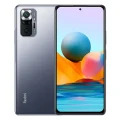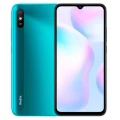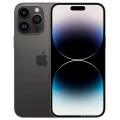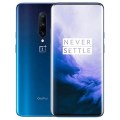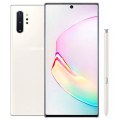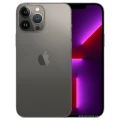- Awesome page
- Latest Mobile
- Smartphones
- Huawei P50 Pro
Huawei P50 Pro
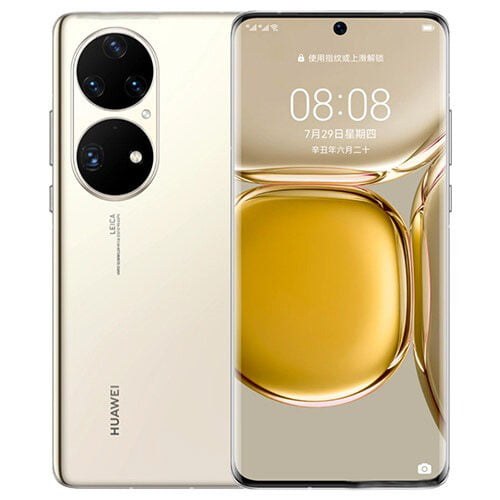


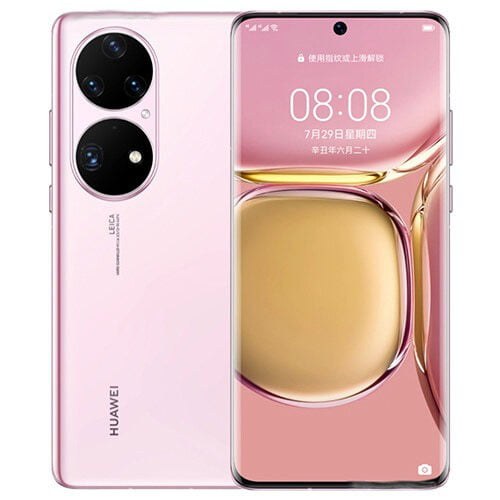
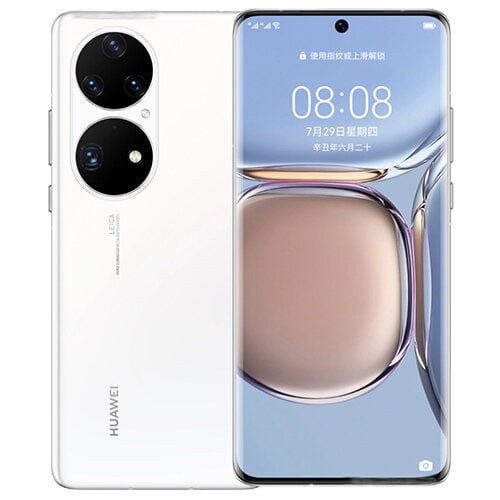
Huawei P50 Pro Price in Bangladesh
The Huawei P50 Pro Price in Bangladesh is BDT 124,999, available in three variants with 8GB or 12GB of RAM and 128GB, 256GB, or 512GB of storage. This premium smartphone is equipped with a 4360mAh battery that supports fast charging, ensuring efficient power management throughout the day.
Running on HarmonyOS 2.0, the Huawei P50 Pro is powered by either the Kirin 9000 (5 nm) or Qualcomm SM8350 Snapdragon 888 4G (5 nm) chipset, depending on the version. The Huawei P50 Pro Price in Bangladesh reflects its cutting-edge technology and advanced features, making it a top choice for those seeking a high-performance device in the flagship category.
Specifications
General
| Model | Huawei P50 Pro |
| Announced | 2021, July 29 |
| Released | 2021, August 12 |
| Status | Available |
| Official price | 8GB 256GB ৳1,24,999 |
| Unofficial price | 8GB 256GB ৳60,000 |
Design
| Dimensions | 158.8 x 72.8 x 8.5 mm (6.25 x 2.87 x 0.33 in) |
| Weight | 195 g (6.88 oz) |
| Colors |
Black, Gold, White, Pink, Blue |
Network
| Technology | GSM / HSPA / LTE |
| 2G Network |
GSM 850 / 900 / 1800 / 1900 - SIM 1 & SIM 2 |
| 3G Network |
HSDPA 800 / 850 / 900 / 1700(AWS) / 1900 / 2100 |
| 4G Network |
LTE (unspecified) |
| GPRS <strong>GPRS</strong> (General Packet Radio Service) is a packet oriented mobile data service on the 2G and 3G cellular communication system's global system for mobile communications (GSM), Generally, GPRS is used for the purpose of wireless data transfer, such as sharing pictures and videos or browsing the Internet via a mobile phone connection. | |
| EDGE <strong>EDGE</strong> (Enhanced Data GSM Environment) is a wireless network technology generally considered the next step in the 2G network offers data transfer rates up to four times faster than ordinary GSM networks, Generally, EDGE is used for the purpose of wireless data transfer, such as sharing pictures and videos or browsing the Internet via a mobile phone connection. | |
| Speed | HSPA 42.2/5.76 Mbps, LTE-A |
Display
| Display Type <strong>Display Technology => </strong> A number of display technologies and types used in mobile phones => TFT (Thin Film Transistor), IPS (In-Place Switching), OLED (Organic Light Emitting Diode), AMOLED (Active-Matrix Organic Light-Emitting Diode), Super AMOLED (an even advanced version of AMOLED), Resistive Touchscreen (Resistive touchscreens contain two layer of conductive material with a very small gap between them which acts as a resistance), Capacitive Touchsceen (Capacitive touchscreen technology consists of a layer of glass coated with a transparent conductor) | OLED capacitive touchscreen, 1B colors |
| Size | 6.6 inches, 105.4 cm2 (~91.2% screen-to-body ratio) |
| Resolution | 1228 x 2700 pixels (~450 ppi density) |
| Features |
120Hz |
Camera
Main camera
| Camera Setup | Quad |
| Primary <strong>Camera</strong> is able to capture photographs and usually videos, The most important characteristics of a camera are the resolution (measured in megapixels), lens focus type (fixed or automatic), higher megapixel cameras are known to capture higher quality photos, but not always a good measurement of the photos quality. |
50 MP, f/1.8, 23mm (wide), 1/1.28&amp;quot;, 1.22µm, omnidirectional PDAF, Laser AF, OIS 64 MP, f/3.5, 90mm (periscope telephoto), PDAF, OIS, 3.5x optical zoom 13 MP, f/2.2, 13mm (ultrawide) 40 MP, f/1.6, 23mm (B/W) |
| Features |
Leica optics, dual-LED flash, panorama, HDR |
| Video | 4K@30/60fps, 1080p@30/60fps, 1080p@960fps; gyro-EIS |
Selfie camera
| Camera Setup | Single |
| Primary <strong>Camera</strong> is able to capture photographs and usually videos, The most important characteristics of a camera are the resolution (measured in megapixels), lens focus type (fixed or automatic), higher megapixel cameras are known to capture higher quality photos, but not always a good measurement of the photos quality. |
13 MP, f/2.4, (wide) |
| Features |
Panorama, HDR |
| Video | 4K@30fps, 1080p@30/60/240fps |
Hardware
| Chipset <strong>Chipset</strong> is a group of integrated circuits designed to perform one or a more dedicated functions, often with real time computing constraints, Popular smartphones are equipped with more advanced embedded chipsets that can do many different tasks depending on their programming. | Kirin 9000 (5 nm) Qualcomm SM8350 Snapdragon 888 4G (5 nm) |
| CPU <strong>CPU</strong> (Central Processing Unit) mostly known as processors, CPU processes instructions in order to carry out certain functions that make your device operate properly. Processors are often described as the brain of computers, smartphones and tablets, Smartphones and tablets rely on processors to carry out their every task, Processors are an incredibly important factor in selecting any type of computing device, including your smartphone. | Octa-core (1x3.13 GHz Cortex-A77 & 3x2.54 GHz Cortex-A77 & 4x2.05 GHz Cortex-A55) Octa-core (1x2.84 GHz Kryo 680 & 3x2.42 GHz Kryo 680 & 4x1.80 GHz Kryo 680) |
| GPU <strong>GPU</strong> (Graphics Processing Unit) is a single-chip processor designed to rapidly manipulate and alter memory to accelerate the creation of images in a frame buffer intended for output to a display, This includes things such as lighting effects, object transformations, and 3D motion. | Mali-G78 MP24 Adreno 660 |
| RAM (Memory) <strong>RAM</strong> (Random Access Memory) is a type of computer memory that can be accessed randomly, any byte of memory can be accessed without touching the preceding bytes that allows information to be stored and accessed quickly from random locations. RAM is the most common type of memory found in computer systems, smartphones, tablets and other electronic devices. | 8/12 GB |
| Internal Storage <strong>Internal Storage</strong> is a data storage space (flash memory) mostly used in smartphones, tablets and other electronic devices where operating system, apps, music, photos, videos, files and other user data Is stored. | 128/256/512 GB |
| Sensors <strong>Sensors</strong> are electronic components that detects and responds to some type of input from the physical environment. The specific input could be light, heat, motion, moisture, pressure and location, The output is generally a signal that is converted to use in computing systems, a location sensor, such as a GPS receiver is able to detect current location of your electronic device. | Fingerprint (under display, optical), accelerometer, gyro, proximity, compass, barometer, color spectrum |
Connectivity
| Bluetooth <strong>Bluetooth</strong> is a wireless communications technology for exchanging data between mobile phones, headsets, computers and other network devices over short distances without wires, Bluetooth technology was primarily designed to support simple wireless networking of personal consumer devices. | 5.1, A2DP, LE |
| Infrared <strong>Infrared</strong> connectivity is an old wireless technology used to connect two electronic devices. It uses a beam of infrared light to transmit information and so requires direct line of sight and operates only at close range. | |
| USB | USB Type-C 3.1, USB On-The-Go |
| GPS <strong>GPS</strong> The Global Positioning System is a satellite-based radio navigation system, GPS permits users to determine their position, velocity and the time 24 hours a day, in all weather, anywhere in the world, In order to locate your position, your device or GPS receiver must have a clear view of the sky. | Yes, with A-GPS. Up to quad-band: GLONASS (4), BDS (4), GALILEO (3), QZSS (2), NavIC |
| NFC <strong>NFC</strong> (Near field communication) is a set of standards for smartphones and similar devices to establish peer-to-peer radio communications with each other by touching them together or bringing them into proximity, usually no more than a few inches. |
Battery
| Battery Type <strong>Battery Type => </strong> Cell phones run on various kinds of batteries depending on the manufacturer, phone size or shape and features. There are basically four types of cell phone batteries => Lithium Polymer, Lithium Ion, Nickel Metal Hydride and Nickel Cadmium. | Non-Removable Li-Po |
| Capacity <strong>Battery Capacity</strong> is a measure (typically in Amp-hr) of the charge stored by the battery, and is determined by the mass of active material contained in the battery. The battery capacity represents the maximum amount of energy that can be extracted from the battery under certain conditions. | 4360mAh Li-Po |
| Charging Charging | Fast charging 66W Fast wireless charging 50W |
Unveiling the Marvel of Huawei P50 Pro for Tech Enthusiasts and Photography Aficionados
Introduction
In the bustling world of smartphones, the Huawei P50 Pro stands as a beacon of innovation and design. For tech enthusiasts, smartphone users, and photography lovers, this device promises to be a game-changer. This review dives deep into every aspect of the Huawei P50 Pro, from its sleek design to its cutting-edge camera technology. By the end of this blog post, you’ll have a comprehensive understanding of what makes the P50 Pro a noteworthy contender in the smartphone market.
Design and Build
The Huawei P50 Pro exudes elegance with its premium design and robust build quality. Encased in a shimmering glass and metal frame, the device feels luxurious in hand. Its ergonomically curved edges ensure a comfortable grip, making it easy to hold during extended use. The sleek profile of the P50 Pro is accentuated by a minimalistic approach, with the rear panel showcasing a distinctive camera module that hints at its photographic prowess.
The craftsmanship is evident in every detail, from the solid construction to the seamless integration of materials. The device is available in an array of captivating colors, allowing users to express their personal style. The front is dominated by a stunning OLED display, which curves gently at the edges, creating an immersive viewing experience. The P50 Pro’s design is not only about aesthetics but also about functionality, with a thoughtful placement of buttons and ports for intuitive use.
In terms of durability, the Huawei P50 Pro is built to withstand everyday wear and tear. The device is also rated IP68 for dust and water resistance, offering peace of mind for users who lead an active lifestyle. Overall, the design and build of the P50 Pro reflect Huawei’s commitment to delivering a premium product that combines beauty and resilience.
Camera Capabilities
One of the standout features of the Huawei P50 Pro is its advanced camera system, co-engineered with Leica. The device boasts a quad-camera setup, including a 50MP main sensor, a 64MP telephoto lens, a 13MP ultra-wide-angle lens, and a 40MP monochrome sensor. This combination allows for exceptional versatility, enabling users to capture stunning photos in various scenarios.
The main sensor delivers sharp, vibrant images with impressive dynamic range. The telephoto lens offers up to 3.5x optical zoom and 100x digital zoom, allowing users to get close to the action without sacrificing image quality. The ultra-wide-angle lens is perfect for capturing expansive landscapes and group photos, while the monochrome sensor adds depth and detail to black-and-white photography.
In terms of video capabilities, the Huawei P50 Pro supports 4K recording at 60fps, ensuring smooth and high-quality footage. The device also features advanced stabilization technology, which minimizes shake and blur, resulting in professional-looking videos. The camera software is equally impressive, with a host of features such as AI-assisted scene recognition, night mode, and portrait mode, allowing users to get creative with their photography.
Performance and Battery Life
Under the hood, the Huawei P50 Pro is powered by the Kirin 9000 chipset, paired with 8GB of RAM. This combination ensures blazing-fast performance, whether you’re multitasking, gaming, or using resource-intensive apps. The device handles everything you throw at it with ease, offering a smooth and responsive user experience.
The P50 Pro also excels in terms of battery life, thanks to its 4,360mAh battery. The device supports 66W fast charging, allowing you to quickly top up the battery when needed. Additionally, the P50 Pro supports 50W wireless charging, offering convenience for users who prefer a cable-free charging experience. With moderate use, the device can easily last a full day on a single charge, making it a reliable companion for daily use.
The combination of top-tier performance and robust battery life makes the Huawei P50 Pro a powerful and dependable device, capable of handling the demands of modern smartphone users. Whether you’re a power user or someone who needs a reliable phone for everyday tasks, the P50 Pro delivers on all fronts.
Software and User Experience
The Huawei P50 Pro runs on HarmonyOS 2, Huawei’s proprietary operating system, which offers a smooth and intuitive user experience. The interface is clean and easy to navigate, with a range of customization options to suit individual preferences. HarmonyOS 2 also brings a host of new features and improvements, enhancing the overall usability of the device.
One of the key highlights of HarmonyOS 2 is its seamless integration with other Huawei devices, creating a cohesive ecosystem that allows for effortless connectivity and collaboration. For instance, you can easily share files and content between your P50 Pro and other Huawei devices, such as tablets, laptops, and smartwatches, with just a few taps.
The app ecosystem on HarmonyOS 2 has also seen significant growth, with a wide range of popular apps available for download. While the lack of Google Mobile Services may be a concern for some users, Huawei’s AppGallery offers a robust selection of apps, and the company continues to expand its app offerings. Overall, the software and user experience on the P50 Pro are polished and enjoyable, providing a solid foundation for daily use.
Price and Value Proposition
The Huawei P50 Pro is positioned as a premium flagship device, and its pricing reflects this. However, considering the wealth of features and cutting-edge technology packed into the device, it offers excellent value for money. When compared to other flagship smartphones in the market, the P50 Pro holds its own, delivering top-notch performance, a versatile camera system, and a premium design.
For tech enthusiasts and photography lovers, the P50 Pro is a compelling choice, offering a unique blend of innovation and style. The device’s value proposition is further enhanced by Huawei’s commitment to quality and customer satisfaction, making it a worthwhile investment for those seeking a high-end smartphone experience.
Conclusion
In conclusion, the Huawei P50 Pro is a remarkable device that stands out in the crowded smartphone market. Its premium design, advanced camera capabilities, powerful performance, and user-friendly software make it an excellent choice for tech enthusiasts, smartphone users, and photography aficionados alike. While the lack of Google Mobile Services may be a drawback for some, the overall package offered by the P50 Pro is hard to beat.
If you’re in the market for a new flagship smartphone that excels in both form and function, the Huawei P50 Pro should be at the top of your list. Its combination of cutting-edge technology and thoughtful design makes it a standout device that is sure to impress. Take the plunge and experience the future of smartphones with the Huawei P50 Pro.
